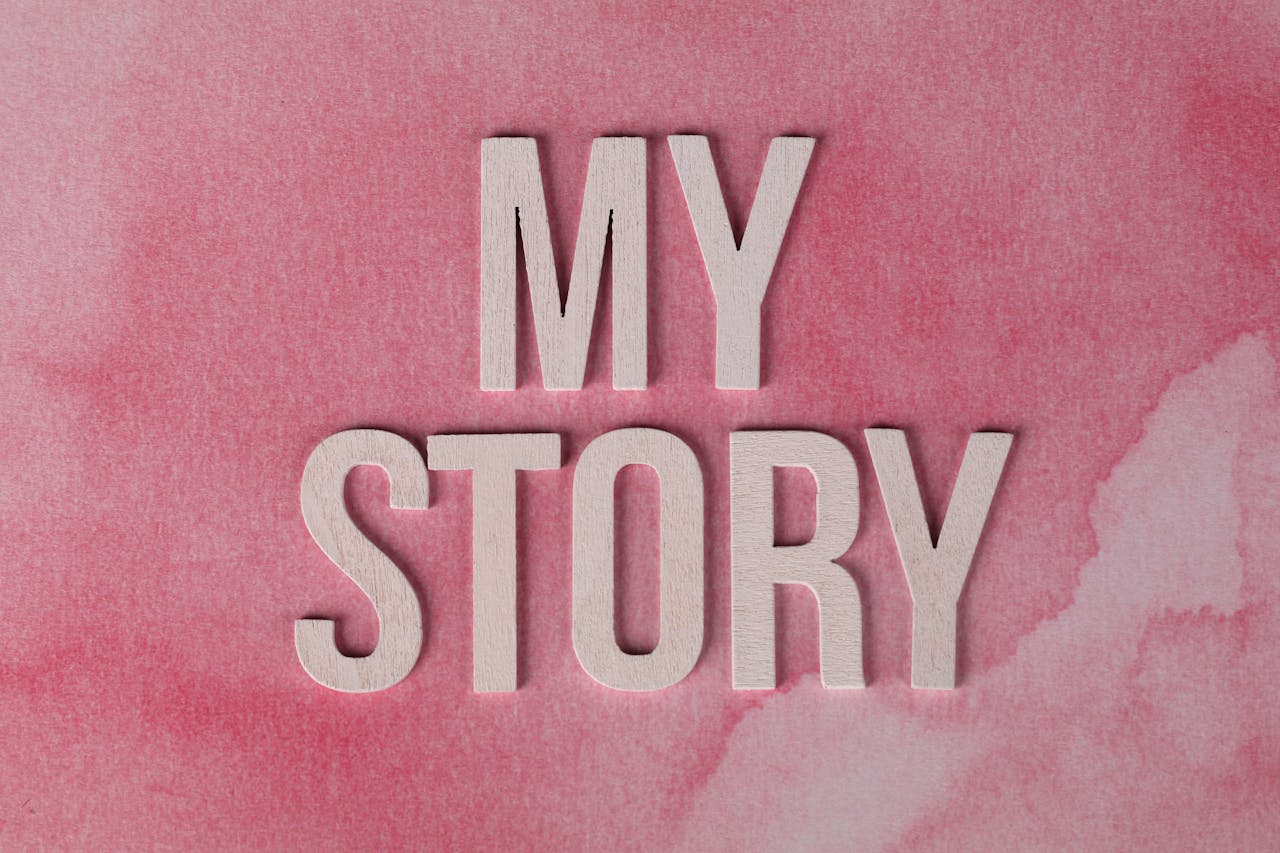Personal branding is the new normal.
Up to 82% of consumers are more likely to trust a business if its executives are active on social media.
It’s a fact.
People can relate more easily with individuals than companies and this is one reason why personal branding goes hand in hand with corporate branding.
You can achieve a lot with your personal brand. From recognition to fame to sales to followers to business growth and more.
But not everyone succeeds in establishing a successful personal brand.
This article unleashes the 7-step personal branding strategy that’ll help you set up your brand starting today.
Let’s start from the basics.
What is Personal Branding?
Personal branding refers to promoting and marketing yourself as an individual to stand out from the crowd. It focuses on building a positive image and positioning you as an expert and authority in your niche.

You build a brand around yourself and become a brand with a clearly defined purpose and goal.
For instance, what do you think of when you hear about Gary Vaynerchuk? You probably think of success and growth.
That’s something Gary has achieved with personal branding by pitching himself as a successful entrepreneur who started with humble beginnings.
Similarly, Brian Dean has positioned himself as an SEO expert and Seth Godin is known as a marketing guru.
And so on…
These individuals used personal branding to transform themselves into a brand. This allows anyone to shape and fine-tune one’s image, position, personality, and aura the way one wants.
Personal Branding Vs. Corporate Branding

Personal branding and business branding are different.
While both serve the same purpose – to brand an entity, the way you approach them is quite different.
- Personal branding focuses on promoting an individual by highlighting key aspects of personality, experience, skills, or any other trait. Corporate branding focuses on growing a business entity.
- Your personal brand requires an authentic and human tone, while business branding requires a professional and consistent voice.
- When you are building a personal brand, you have to be very flexible and adaptable. Your brand and its image should change as you evolve as a person. This isn’t the case with corporate branding where you need to stick with consistent branding that rarely changes.
- The target audience in personal branding typically includes followers and individuals who aren’t your customers. In the case of business, your audience is your customers and investors.
Pillars of Personal Branding

Before you start, it’s critical to understand the basic components of personal branding that are a must. These include:
- Personal qualification
- Target audience
- Differentiation.
1. Personal Qualifications
It’s a central pillar.
Your personal qualifications include skills, experience, expertise, education, or any other polished competence.
If you don’t have any such qualification yet, you aren’t ready to have a personal brand.
The easiest one is experience. Get experience in whatever you are doing, and once you have it, you can start working on your personal brand.
2. Target Audience
The perception of your target audience and what they think of you is the second component of personal branding.
What this means is you have to identify a target group. Your audience shapes your personal branding strategy and its goals.
3. Differentiation
What makes you different from others who possess the same qualifications? This sets your unique selling proposition and helps you stand out.
You need to be unique in some way from your competitors to make an impact.
Why Personal Branding Matters
When done right, you can achieve tremendous growth and popularity with personal branding that’s otherwise not possible.
Here’s what makes personal branding important in today’s world:
Differentiation
It is the easiest way to stand out. You can differentiate yourself from others in your niche.
And once you stand out from the crowd, things get a lot easier – and fun.
Elon Musk is an example.
He has established himself as an expert in electric cars, which has significantly improved sales of Tesla vehicles within and outside the US.
On the other side, BYD, which is the biggest global competitor of Tesla, doesn’t have someone to represent their company. BYD stands on its corporate branding alone.
Tesla leverages its own branding and Musk’s branding.
That’s what you can achieve with personal branding, irrespective of whether you are associated with a company or you need clients or customers for yourself (e.g., freelancers).
Authority and Trust
Personal branding helps you gain trust, credibility, and authority.
There are rather long-term benefits that might not be noticeable in the early days. You need to consistently market yourself by highlighting your major traits that make you unique.
It all comes down to how you approach personal branding and what your primary goal is.
If your personal branding goal is to become an authority leader in your niche, you can work on that. However, if it’s not your goal – you’ll still be able to gain trust and authority with personal branding.
Credibility and trust are byproducts of personal branding. People start trusting you as you grow as a brand.
Once your target audience starts trusting you, that’s the moment when you can generate sales. Statistics show that 81% of people say that they need to trust the brand before they buy from it:
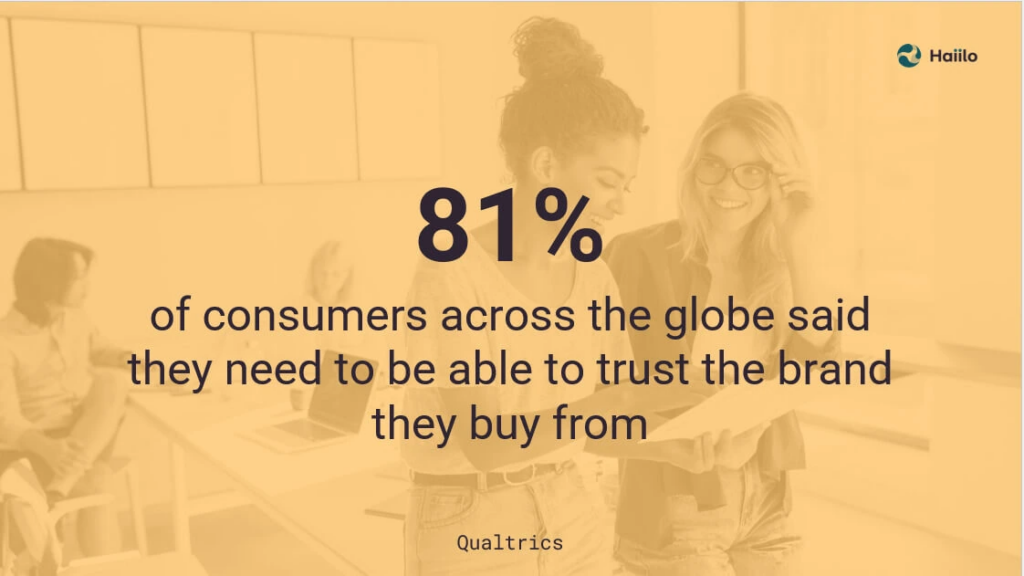
The same goes for personal brands.
Gaining the trust of your ideal customers makes it easy to influence their purchase decisions.
Promote Your Business
The core purpose of building your personal brand is to sell something.
If you look around, all the influencers, celebrities, thought leaders, and people who have transformed themselves into big brands – sell something.
They either sell their own branded products or they sell products of a company they are associated with (or own).
Elon Musk, MrBeast, Neil Patel, and pretty much everyone have something to sell.
That’s how it works.
And that’s the whole point of investing in personal branding.
You can sell your own products, you can sell other people’s products, and you can sell your services. Promoting your business gets a whole lot easier.
Why?
Because people trust individuals more than brands. A whopping 63% of consumers say that they trust influencers more than the brand itself:

This means if you have a business, you need to simultaneously invest in corporate and personal branding. These are two rock-solid ways to promote and grow your business collectively, where personal branding plays a more powerful and effective role.
How to Create a Personal Branding Strategy
Let’s get to the nitty-gritty.
How do you get started with personal branding?
The first step is having a personal branding strategy that tells you what you want to do and how you’ll get the desired results. Follow these steps to create a successful personal branding strategy from scratch:
Step #1: Set Goals
Get started by setting both short-term and long-term goals for personal branding. Ask yourself the following question: What do you want to achieve with personal branding?
- Do you want to become an influencer or a content creator?
- Do you want to promote a business you own or co-own?
- Do you intend to launch a product in the near future and plan to sell it through your personal brand?
- Do you need clients for your services business?
- Are you focused on career development?
The idea is to get to know yourself and your target objective clearly. That’s how you can craft a compelling personal brand.
If you don’t have a clearly defined goal yet, it’s not worth it to invest in a personal brand. It needs intensive resources and a lot of time. Lack of clarity will ruin your brand and won’t lead you anywhere.
You can use the OKR framework to set goals for your personal brand and it will help you identify if you really need to invest in your brand:
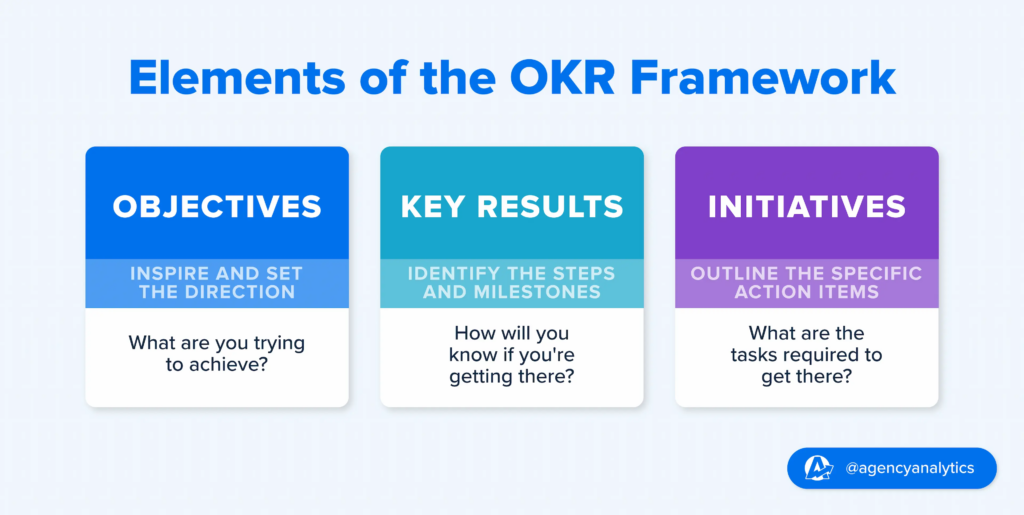
It focuses on objectives, key results you wish to achieve, and initiatives you will take to reach your goal. Use it to come up with a solid objective for your personal brand.
Step #2: Define Your Target Audience
Part of goal setting is to set your target audience. This can only be done once you have a clearly defined goal for your personal brand.
For instance, if your goal is to generate leads for your B2B SaaS company in the finance niche, your target audience will be businesses or CFOs.
If, however, your objective is to get clients for your personal development course, you’ll have a totally different target audience.
Your goal should align with your target audience.
When defining an audience for your personal brand, try to stay focused. Instead of targeting a broad group of people, narrow down and choose a niche market. It is easier to target a small group of people than to target a diverse, large market.
You should consider using a buyer persona template like this to create a semi-fictional representation of your ideal customer. Customer personas are helpful when you have to target multiple unique target groups.
For instance, if you have to generate leads for B2B SaaS in the finance niche, you might have to target CFOs, finance businesses, fintech companies, and startups in the finance industry.
You should, ideally, create at least one buyer persona for each of these target groups because they all have different needs and challenges.
Here’s what a buyer persona looks like:

You need data to create buyer personas that are a true representation of your target audience.
Identification of the target audience helps you in:
- Identifying the right marketing channels and marketing collateral
- Figuring out how you want to pitch yourself to them as an expert
- Better understanding them and their needs.
Step #3: Define Your Messaging
Once you are done with the basics, it’s time to create a marketing message for your personal brand.
In simple words: How do you want to present and pitch yourself to your target audience?
This includes identifying your positioning (that’s embedded in your abilities or traits), tone and voice, identity, and marketing collateral:
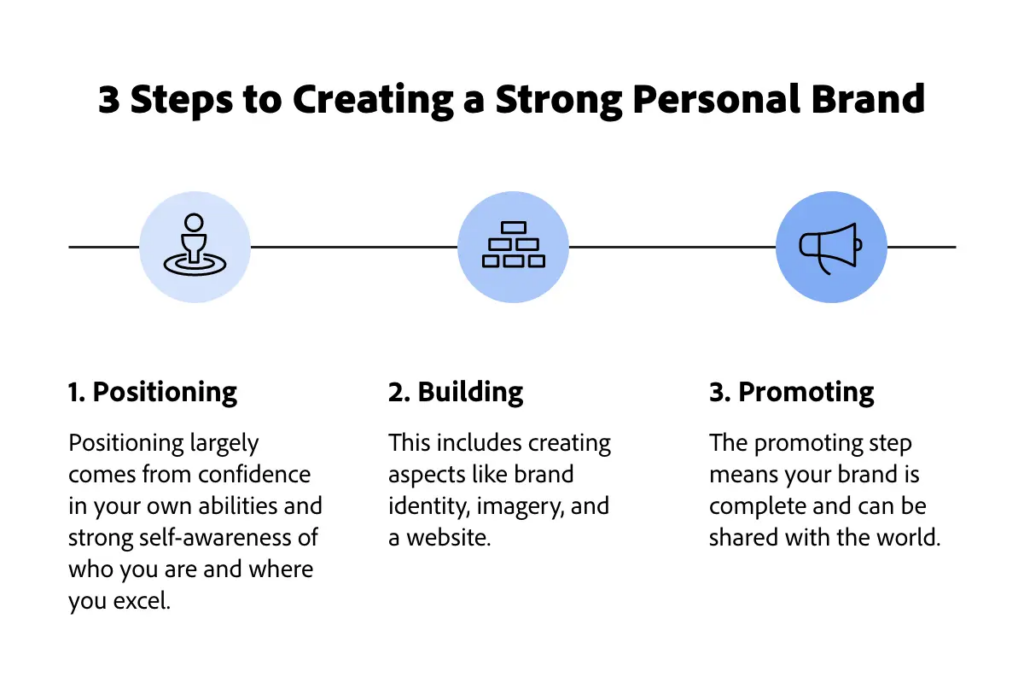
You need to define how you want to be perceived by your target audience. You can control this in the way you position yourself.
The first step is identifying your core skill where you excel. This should be related to your goal and target audience.
For instance, if you want to be trusted by financial experts and finance businesses, you should have a strong background in finance. It could be your education, experience, career, or anything.
Your personal brand relies on this core skill, trait, or ability. It could be a god-gifted ability or an acquired skill.
You need to identify it to build your brand messaging around it.
For example, what do you think of when you hear about Brian Dean?
SEO.
And what do you think of when you think of Cristiano Ronaldo?
Best footballer.
You need to create your brand messaging based on what you are best at and what you can deliver to your target audience that no one else can do better than you.
Step #4: Identify Marketing Channels
This one is rather easy.
Choose the most appropriate marketing channels and touchpoints where you’ll engage and connect with your target audience.
How do you know it?
Research and buyer personas.
If you haven’t collected primary data from your target audience yet, it’s time you do. It’s a lot of work and an expensive route, but it is totally worth it.
It requires collecting primary data from your potential audience. For instance, you can run surveys and conduct interviews to collect data on what type of marketing channels your primary audience uses.
This data is then fed into existing buyer personas.
And then you can easily determine which types of channels to use to target a specific buyer persona.
If you don’t have the resources to collect primary data, you can switch to secondary data. It might not be too reliable, but it’s better to have something than nothing.

In any case, you have to use the data to do two things:
- Find out the marketing channels and platforms your audience uses
- Add this data to buyer personas.
Marketing channels aren’t limited to social media, but they include all types of touchpoints where you can connect with your audience.
For instance, a buyer persona might prefer reading blog posts, which means you need to have a blog, while another buyer persona might prefer interacting via live webinar sessions.
Identify all the touchpoints and choose the top ones that you’ll target. You don’t have to be on all the touchpoints. You need to pick and choose channels based on your preferences and the ones that align with your personal brand.
Step #5: Deliver Value Consistently
Delivering value means you have to create and deliver exceptionally high quality content across all the touchpoints you are targeting.
Ideally, you need to have a content marketing strategy. It should define what content you should publish, where it is to be published, when it is to be published, and how to track its performance.
This includes all types and formats of content including text, graphics, audio, video, and others.
You don’t have to publish just any content, it has to be authoritative, helpful, and valuable. Refer to Google’s E-E-A-T to get an idea of what type of content you should create to stand out:
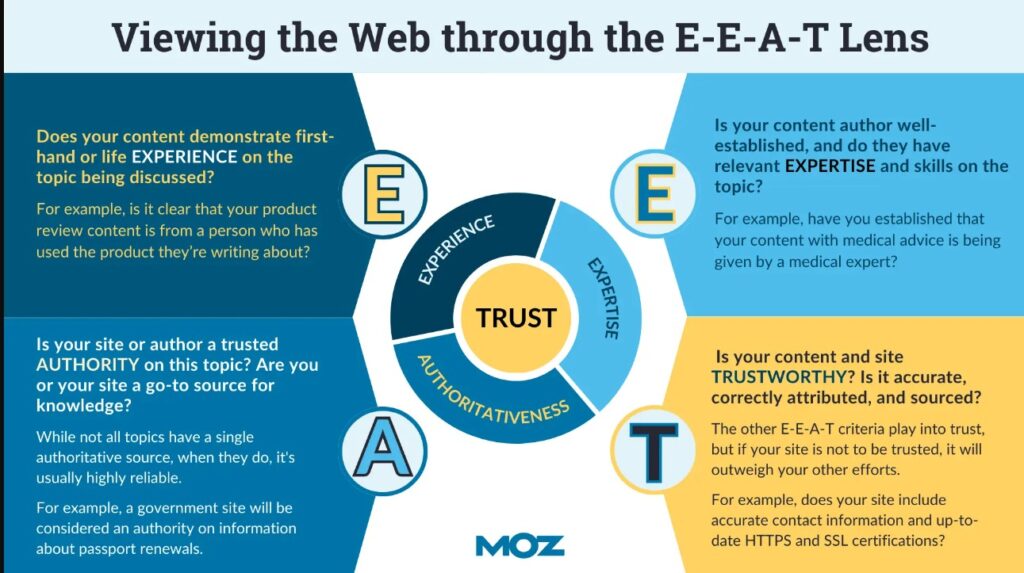
This is the best framework to create content for any audience. This is published by Google for rating content in SERPs, but it can be used for social media content too.
Your content needs to educate, engage, convince, and inspire your target audience. Following E-E-A-T guidelines will make it easier for you to grow your personal brand by delivering valuable content that doesn’t just sell – but rather helps and solves problems.
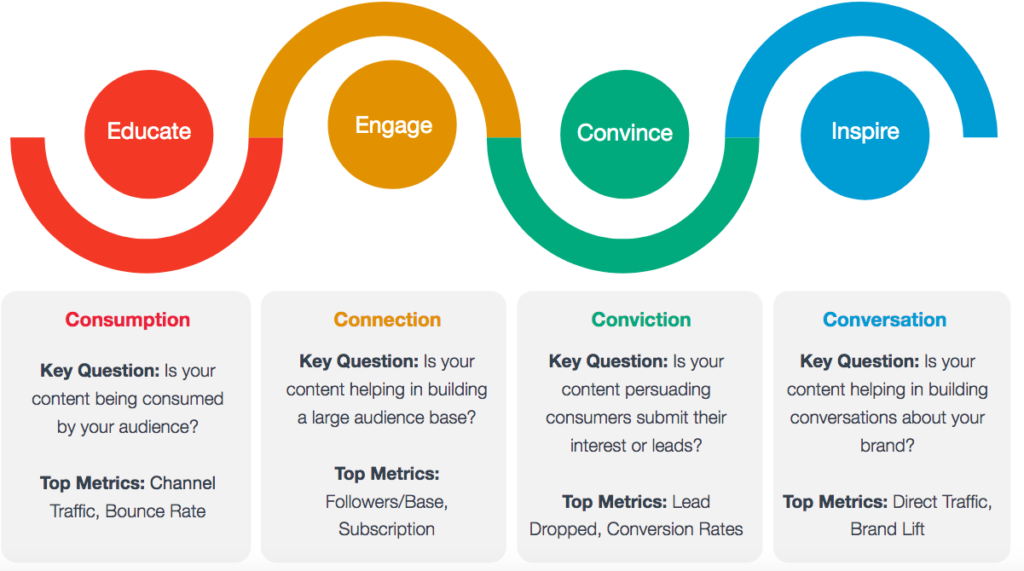
You need to publish new content consistently. That’s how you stay relevant and engage with your audience. This requires an editorial calendar that makes it easy to keep track of content publication across channels.
Here’s an example of a social media editorial calendar:
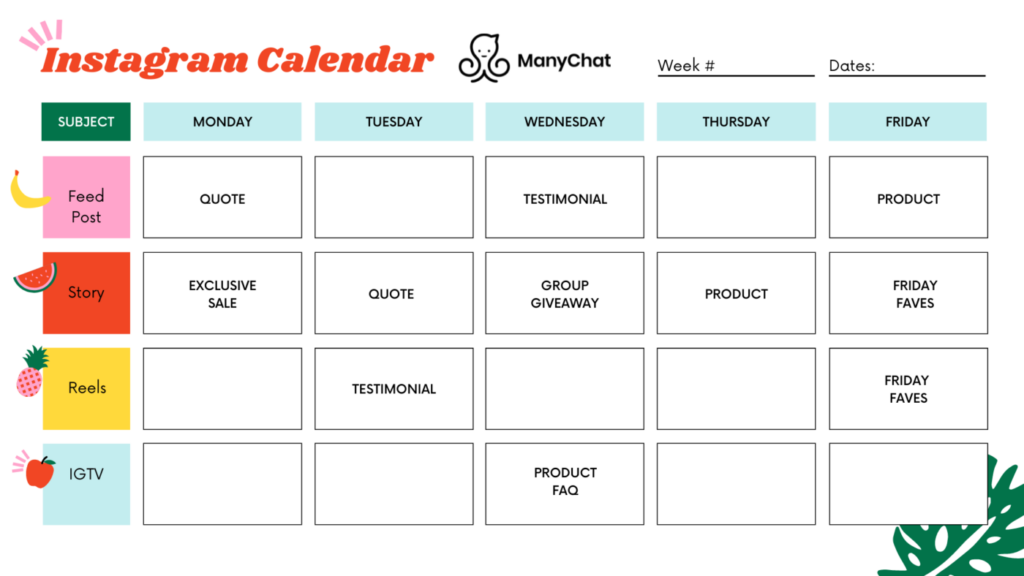
An editorial calendar helps you publish content at the right time and at the right frequency. Research shows that engagement on social media varies depending on when the post goes live. Certain days of the week have always high engagement across all industries:

It’s essential to have an editorial calendar to keep content publication organized. It helps you track performance and stay ahead of your game.
Step #6: Market and Engage
Delivering value in the form of quality content isn’t enough. You need to connect with your target audience to build your personal brand.
Publishing content isn’t everything. It requires marketing. You need to make sure your content reaches the right eyeballs, which gets easier when you have a growing network of people.
The first thing you need to do is market your content once it goes live.
Whether it’s a blog post, a post on X, or a short video on Facebook, you need to make sure it reaches your target audience. You can leverage organic reach or switch to paid ads to increase your reach significantly and quickly.
Ideally, you should use organic and paid marketing techniques simultaneously for personal branding.
The next step is engaging with your audience.
Engagement refers to shares, likes, and comments on social media. And it refers to time spent on a website, page views, and the number of visitors on a website:

Engagement has to be generated. It’s very hard to get shares and likes organically, especially when you are new to personal branding. When people don’t know you and what you do, they’ll be less likely to engage with your content.
You need to use the following best practices to engage with your followers and target audience across all channels:
- Leverage storytelling in your content, as it’s the best way to resonate with your audience
- Create interactive content such as surveys, quizzes, infographics, etc.
- Interact with your audience by replying to their comments, following them back, and resharing their content
- Run a contest
- Keep content interesting and informative instead of professional and bland
- Follow and engage with influencers and other experts in your niche
- Leave comments on other people’s content
- Invest in SEO and acquire natural backlinks to boost your site’s traffic
- Focus on delivering an exceptional user experience on your site.
Step #7: Adapt
Your personal branding strategy requires several tweaks at regular intervals.
Sometimes you have to change your strategy based on customer feedback. At other moments, you have to adjust to the changing technologies. And most commonly, you have to change your tone and voice as you grow and evolve as a person.
Neil Patel, for instance, has built a personal brand as a marketer. He then co-founded an ad agency called Neil Patel Digital along with a few SaaS platforms like Ubersuggest. This was done when he was quite popular and had a full-grown personal brand.
He shifted his personal branding strategy from himself to his businesses once he founded quite a few of them.
This type of flexibility is required (and should be part of your personality) from personal brands.
You need to adapt and change based on circumstances.
A personal branding strategy has to be more flexible than a corporate brand. You should be ready to change if you really want to grow your personal brand.
Final Thoughts
Building a personal brand requires time, patience, and consistency. It’s a long-term strategy for growth. You need to have a clear understanding of the ins and outs of personal branding before you create a strategy.
If, for instance, you don’t have the time or resources to commit to your personal brand, it’s useless to proceed with it.
Make sure you are ready for years before you invest your first buck in it.
At the same time, you need to know yourself, your strengths, and what makes you better than your competitors.
Featured Image: Pexels



